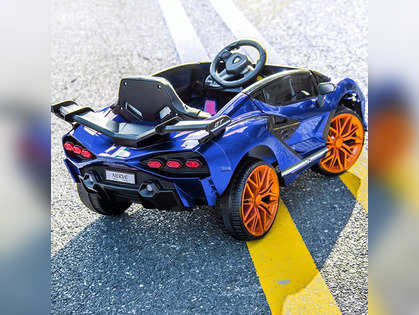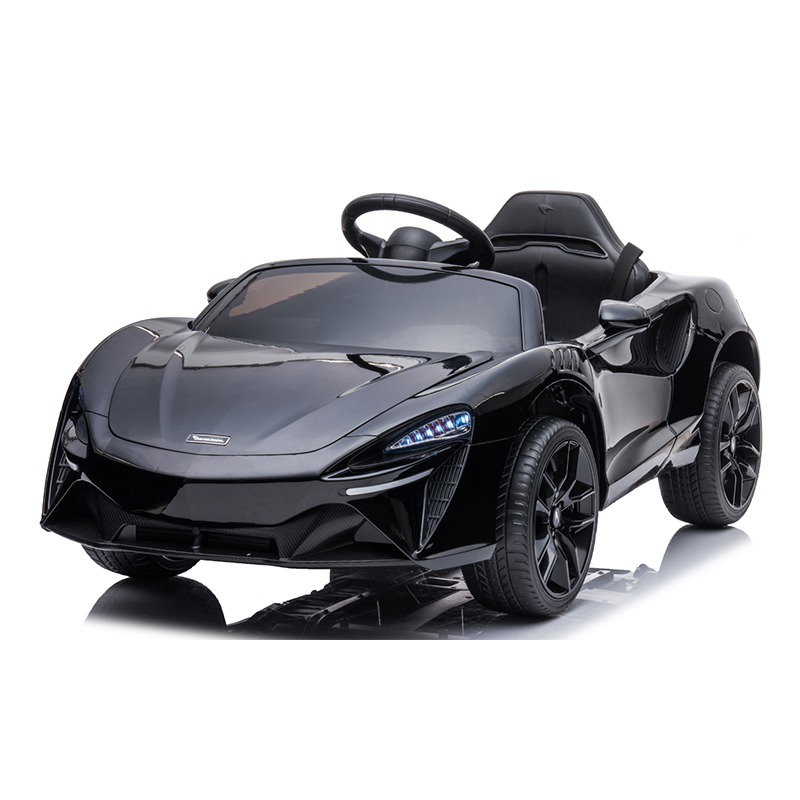Top Facts To Choosing Kids Ride On Cars
Wiki Article
What Should You Look To Find In-Ride-On Cars Suitable For Older Children?
If you're thinking about ride-on cars for kids, it's important to consider their age, size, and development stage to ensure that the car is secure, suitable and fun for children. Take into consideration these aspects:
Younger Toddlers (1 to 3 years old): Look for ride-on vehicles that are specially made for this age group. These vehicles are usually lower than the ground and are easy to operate and have simple features such as steering wheels or buttons. Select a ride-on vehicle with a broad base for stability, and with a minimal chance of tipping over.
Older children (3and older) If your child gets older is expected to be able to use more sophisticated rides that have added features and controls. Think about cars that can be adjusted to accommodate children and weight capacity that is larger, as well as more interactive features such as lights, sounds or music. Think about ride-on cars that feature the ability to adjust speeds or parental controls for different skill levels.
Size
Weight and Height - When selecting a ride on vehicle, consider your child’s height and their weight. Pick a car with a the weight and height capacity that is comfortable for your child. Avoid small or large cars which are unsafe to drive in or uncomfortable.
Comfort and legroom Be sure that the car has enough room and legroom for your child to sit comfortably. Verify the measurements of the car's seating area to ensure it's suitable for your child's size and height.
The stage of development -
Motor Skills - When selecting the right ride-on it is important to consider your child's motor skills and their ability to coordinate. The older children might be able to operate more sophisticated features and controls however, younger toddlers may need simpler controls.
Independence and Confidence. Ride-on cars can help build confidence and independence as children master the ability to control and navigate the car. Select a ride-on model that allows your child to practice steering, acceleration, and braking without assistance, and build confidence with time.
When selecting a ride-on car be sure to consider your child's needs and interests. Choose a theme, color, or feature that will draw your child's attention. It could be an old-fashioned vehicle or sports car with personality, a pickup truck, or a classic automobile.
When you consider the age, size and stage of development You can select an ride-on vehicle that's secure, comfortable, and engaging, providing hours of fun and learning opportunities for your child as they explore and play. See the best Audi kids car for blog tips including race car toy, two seater childrens electric cars, toy ride, childs ride on car, toy a car, 2 seater electric cars, toy cars, two seater electric cars, ride on car, childs ride on car and more. .

What Are The Features Offered By The Ride-On Cars?
There are a variety of features that come with ride-on cars. These include accessories and features that enhance the experience and real for kids. Here are some common features of ride-on car accessories:
A lot of ride-on cars come with working headlights to illuminate the way ahead. This increases the visibility and realistic, particularly in areas with poor illumination or at night.
Horn Sounds
Ride-on cars usually have an horn button, or a steering wheel that emits horn sounds when the button is pressed. This allows children to alert others and play the role of a real vehicle.
MP3 Player compatible MP3 Player Compatible
Some models of ride-on vehicles have been designed to be MP3 compatible, allowing youngsters to connect their music devices via USB port or an auxiliary input. While driving the ride on vehicle, passengers can listen to music that are their favorites.
Realistic Engine Noises -
Ride-on vehicles may have built-in sound effects that mimic realistic engine noises and revving sounds. They can also be used to simulate acceleration sounds, adding to the experience of driving in a real-life setting and making children feel like they're driving a real vehicle.
Remote Control
Certain ride-ons have remote controls for parents that allow parents to watch and assist their children via remote. Parents can drive the car, regulate the speed, or stop the vehicle remotely, which ensures safety and peace of mind.
Seat Belts -
Seat belts and safety harnesses are commonly found in ride-on vehicles. They offer an extra layer of security, preventing children from falling off while playing.
Working Doors
Certain ride-on cars have doors that are functional and can be closed and opened, allowing children to enter and leave the vehicle quickly and adding to the realism of the driving experience.
Storage Compartment
Some rides have storage compartments, or trunk, in which children can store their toys as well as snacks and other items. These features add versatility and ease of game.
Adjustable Seats -
Some ride-on vehicles have adjustable seats. These can be moved backwards or forwards in order to fit children who are different heights or give the children more space as they develop.
Remote Emergency Stop Button
Some ride-on cars come with an emergency stop button that can be operated remotely that gives parents the ability to immediately stop their car in an emergency.
These features and accessories add to the overall pleasure of ride-on vehicles, their realism and security. They allow children to have imaginative play, while having fun and adventures in their car. Have a look at the most popular JCB ride on digger for more recommendations including electric car ride, ride a toy, kids electric cars, childrens ride on, two seater electric cars, riding digger, toy toy cars, toy and car, toy toy cars, digger ride and more. .

What Is The Best Remote Control Car To Use With Children? What Are Some Of The Advantages And Disadvantages?
Remote control children's cars, also known as RC cars, or remote-controlled vehicles, come in various sizes and styles as well as price ranges to fit different preferences and budgets. This article will provide a summary of the pros and cons, and the sizes of remote controlled cars.
Electric RC Cars – These are battery-powered, remote-controlled vehicles that can be used both outdoors and indoors. They come in a variety of types, including buggies, trucks, and sports cars.
Nitro RC Cars – Gas powered remote controlled vehicles that offer greater performance but need more care. They tend to be larger and are more expensive than electric RC vehicles.
Scale models can be described as replicas of real-life vehicles, such as cars and trucks. They can also be operated remotely. Scale models range between 1-10 and 1-24, with the larger scales providing more detail.
Sizes -
The dimensions of remote-controlled cars for children range from tiny micro-sized versions to larger-scale replicas. The weight and size of the car can affect its performance.
Micro-sized cars, which are lightweight and small, are great for indoor use and also by younger children. Larger models provide more power and durability, making them ideal for off-road racing in the outdoors and for outdoor driving.
Prices
The cost of remote-controlled cars for children may vary based on characteristics, features, and brands as well as the quality.
The RC cars that are small-sized and electric range from $20 to $100 While larger-scale nitro and electric RC cars are available from $100 to $500 or more.
Scale models, premium hobby RCs range between several hundred dollars to over a $1,000 depending on the quality of the model and the performance.
Pros and Cons
Pros -
Entertainment - Remote controls for children's vehicles provide hours of entertainment and excitement for both adults and children.
Skills Development The use of RC vehicles aids in the development of spatial awareness, hand-eye coordination and problem-solving skills.
Social Interaction - RC vehicles can be enjoyed with families and friends, encouraging social interaction and cooperation.
Aftermarket parts such as upgrades, accessories, and other items from the aftermarket can be used to customize many RC cars and improve their performance.
Cons -
Cost - Remote control vehicles for children, especially those with high-end features and model that are hobby-grade, can be very expensive.
Learning Curve – Operating a RC vehicle requires practice and skill. Children who are younger may find it difficult to control the controls.
Maintenance – RC vehicles need regular maintenance. This includes cleaning, lubrication as well as occasional repairs and replacements of parts.
Safety Risks RC automobiles can pose security risks, such as collisions, falls, and electrical hazards, if utilized in a responsible manner and with adult supervision.
Remote-controlled cars for kids provide a fascinating enjoyable and educational experience. However, it's essential to pick the correct model based on the factors of size, safety, price and features. Hobby-grade RC automobiles are more suitable for older and enthusiast children and simpler models are ideal for children who are younger and novice children. See the recommended electric kids cars kidscars.co.uk recommendations for blog examples including remote control childrens car, electric ride on, toy car, ride on digger, childrens digger, race car toy car, car for toy, race car toy car, toy car, childs car toy and more. .
